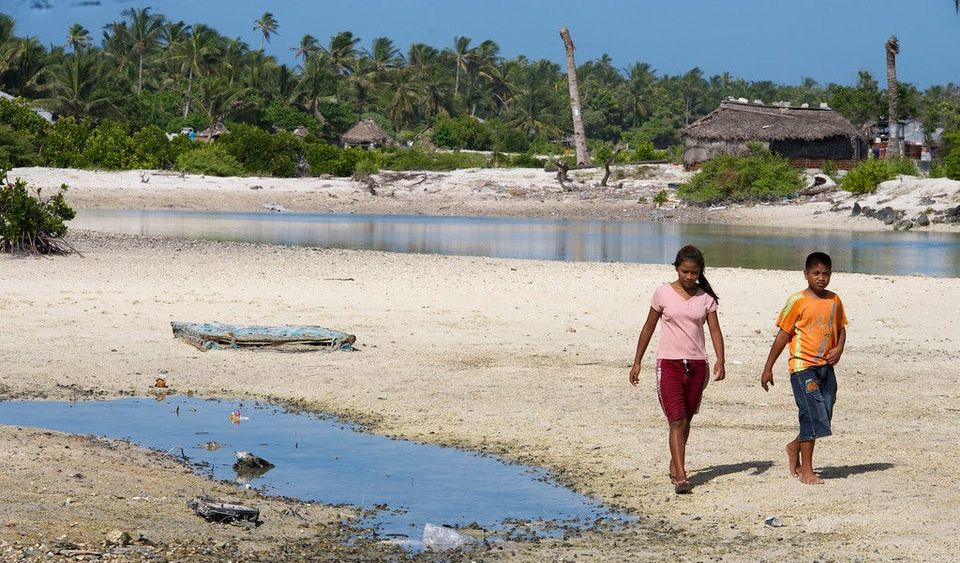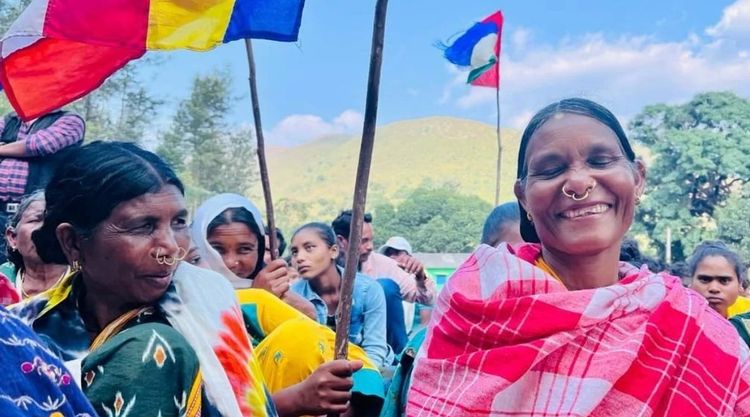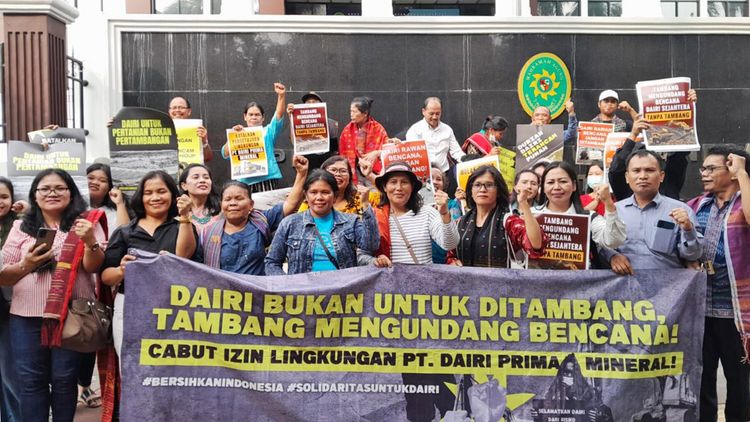Asia Undercovered Special: Climate change in the Pacific

“You know that with a sea level rise of over 1.5 meters, hundreds of millions of people would be dead. They would simply be wiped out,” Mohamed Nasheed, then-President of the Maldives, told the UN Chronicle in 2009. “Countries are now under threat because of climate change and because of the stress climate change has on resources. It’s not just an environmental issue; it’s now about a global security issue.”
Decades ago, 43 low-lying countries and island nations banded together to form the Alliance of Small Island States to help petition the United Nations for more immediate action on climate change. Over a fourth of the world’s countries are in this alliance. However, combined they only account for around one percent of global carbon emissions. These islands don’t have the luxury of waiting for wealthier countries to decide to take meaningful action, as their inhabitants stare down the barrel of forced mass migration as climate change refugees.
In this special issue, written by Raisa Nastukova, a freelance journalist and photographer, we share stories from the often ignored Asia-Pacific and the reality of living in a climate-altered, disappearing world.

One Billion Displaced by 2050
In September 2020, the Institute for Economics and Peace think-tank released a report that estimates about one billion people will face displacement from ecological threats by 2050. The world’s population is estimated to reach 10 billion by 2050 and this influx of new people will enter a planet with a decreased ability to meet their need for basic resources.
The most deaths from natural disasters occur in the Asia-Pacific region, with more than 581,000 since 1990. The biggest killer in the region is earthquakes, which have killed more than 319,000. 19 countries included in the Ecological Threat Register are threatened by rising sea levels to the degree that at least 10 percent of each country’s residents would be impacted.
“This will have significant consequences for low-lying coastal areas in China, Bangladesh, India, Vietnam, Indonesia and Thailand over the next three decades – as well as cities with large populations like Alexandria in Egypt, the Hague in the Netherlands, and Osaka in Japan,” claims the report.
“[Steve Killelea, founder of the Institute for Economics and Peace] said the world has 60% less fresh water available than it did 50 years ago, while demand for food is forecast to rise by 50% in the next 30 years, drive in large part by the expansion of the middle class in Asia,” wrote Luke Baker in Reuters.

Existing Geographic Vulnerabilities Grow Under Climate Change
Asia-Pacific islands are the most disaster-prone region on earth, with inhabitants facing earthquakes, severe flooding, hurricanes, and most threatening to their continued survival, rising sea levels caused by climate change (WeForum).
Their geographic vulnerability is exacerbated by social and political turmoil like poverty, political instability, lack of resources, poor disaster preparedness and response, and shoddily constructed homes in big cities during their rapid urbanization. Asia-Pacific islanders are on the front-lines of climate change as the earth’s canary in a coal mine.

Coastal Asia Faces Quickly Sinking Cities
10 million people call Indonesia’s capital, Jakarta, home. However, parts of the metropolis are sinking at an alarming rate of seven inches per year due to excessive groundwater extraction. The city is facing a war on two fronts, as Jakarta is mostly below sea level and rising sea levels from climate change could bring disaster. In 2019, Indonesian President Joko Widodo announced the impending move of the country’s administrative capital from Jakarta to the East Kalimantan province (Rob Picheta CNN.)
Indonesia is one of the world’s biggest greenhouse gas emitters. Part of these emissions are from the burning of peatlands, which store large amounts of carbon, to clear the way for palm oil plantation. Worryingly, in October, Indonesia’s parliament passed a massive bill on job creation that would weakens environmental protections and threatens the rights of Indigenous people (Human Rights Watch).
CAIT Climate Data Explorer offers an interactive tool for views to explore the net emissions by province in Indonesia.
In 2019, Singapore Prime Minister Lee Hsien Loong said that protecting the small country from rising sea levels is projected to cost $100 billion or more in the next few decades.
Bangkok, Thailand’s capital, is predicted to be 40 percent submerged by 2030, according to one study by the World Bank. Rina Chandran’s Stay or go? published in Reuters reports that the combined threat of sea level rise and coastal erosion will make most island atolls uninhabitable by 2050.

Security threats in the Asia-Pacific region will be exacerbated by the environmental stressors of ocean acidification, rising sea levels, and the potentially increased frequency and intensity of extreme weather events. In addition to the urgent crisis of rising sea levels swallowing low-lying islands, climate change will bring a host of new problems to already overwhelmed countries including wide-spread displacement and forced migration, food and water insecurity, and increased military tensions.
“Rapid depletion of fish stocks is already impacting food security across the region, and ocean acidification and rising temperatures will accelerate the trend, further straining the international rules-based approach to fishing governance. This could in turn increase tensions, violent confrontations, and military brinksmanship over the multiple overlapping and competing territorial claims in the South China Sea,” wrote Shiloh Fetzek and Dennis McGinn in The Diplomat.
According to Tarek Ghani and Robert Malley in “Climate Change Doesn’t Have to Stoke Conflict,” in Foreign Affairs, just a local temperature rise of half a degree Celsius is linked with a shocking ten to twenty percent surge in deadly conflict. “Tropical areas will have even more extreme warming, with a correspondingly higher risk of climate-related insecurity,” argue Ghani and Malley.

Kiribati Changes Strategy From Migration to Increased Infrastructure
Long considered one of the most vulnerable countries to climate change is the Pacific Island nation of Kiribati, made up of just 30 atolls and one island, with an average elevation of only six feet above sea level. Speaking to Christopher Pala for The Guardian, President Taneti Maamau said aims to build more infrastructure instead of focusing on migration, attempting this through dredging projects.
This follow his remarks at the 2017 UN climate conference “Climate change is indeed a serious problem, but we don’t believe that Kiribati will sink like the Titanic ship.” He then asked world leaders for support on his 20-year plan to instead develop the impoverished and remote Kiribati into the “Dubai or Singapore” of the Pacific. (CBS News).
Kiribati’s previous president, Anote Tong, took a much different approach to climate change. Under his leadership, Kiribati secured funding for an island in Fiji with higher land for Kiribati migrants. He urged citizens to “[migrate] with dignity” by moving while there is still plenty of time (Joshua Mcdonald, The Diplomat).

Asia Undercovered: In-depth round-ups and analysis of the news, events, trends and people changing Asia, but not getting enough attention in the US media.





Member discussion